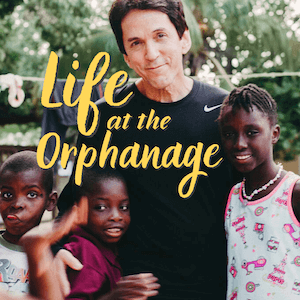First come the words: “SPECIAL REPORT.”
Then comes a TV anchor, pushing on a small earpiece, breathlessly informing you there has been another shooting in a high school.
Next comes a map. It shows where the high school is located.
Then the aerial view, from a helicopter.
Next comes a voice, from a local TV affiliate: “Our initial reports are sketchy, but there has apparently been a shooting in the school …at least three people are believed hit …we do not know the shooter’s identity . . .”
Next come the camera shots.
Images of kids running away.
Images of police.
Soon we see pictures of ambulances and cop cars. We go back to the aerial view from the helicopter. We see kids gathered in the street. Some of them are looking up at the helicopter.
By this point, the anchor is repeating — for the eighth or ninth time — the location, the number of wounded, the hour at which it happened.
Quickly, viewers learn more about this high school than they know about their own. They learn where the cafeteria is, where the principal’s office is, where the bathrooms are. They learn how many people live in the town, their economic and racial makeup.
Eventually, a student is found and put on camera. “I heard some shots…. I started running . . .”
Then a parent appears, distraught. “We didn’t think this could happen in our community…. It’s supposed to be a safe place…. It’s just terrible . . .”
The script continues
In time, the identity of the alleged shooter is revealed. The anchor tells us he or she is 15 years old, or 13, or 17. A photo — a snapshot, yearbook picture, whatever — is shown over and over.
A reporter talks about the gun.
Someone comes on camera — a classmate, a neighbor — and says, “He was a quiet kid” or “She was a skinny kid” or “He was always picked on.”
A psychiatrist, quickly rushed to the TV studio, is interviewed about the effects of violence on teenagers.
Another expert — perhaps on parenting — is thrown on camera, talking about the lack of love today’s children suffer.
A news conference is hastily thrown together, in which the police chief and the school principal detail what they know and how they are dealing with it.
The helicopter hovers overhead.
A portrait is constructed of the shooter. Kids who knew him — or kids who say they knew him — are quickly positioned in front of the lenses, where they speak with passion.
“He was a rough kid . . .”
“He was a lonely kid . . .”
“He was in a few of my classes . . .”
Then they move to the next camera and say the same thing.
The shooter, now in custody, is shown again and again, perhaps getting into a squad car, perhaps wearing handcuffs. Maybe he scowls at his captors. Maybe he is bleeding.
Special reports continue. Where did the gun came from? What do the parents do? Are they divorced?
More experts are interviewed, more friends and neighbors.
The TV now has a graphic that appears before every report, a sort of video name tag:
“Tragedy in the Classroom.”
From TV to print to radio
In the hours that follow, the spotlight broadens. The morning shows —
“Today,” “Good Morning America,” “The Early Show” — all do special reports with the victims’ families. Politicians decry the cowardice of the act. Some call for tighter gun laws. Some call for more parental responsibility.
The newspapers write huge stories. The headlines are bold and big. The Internet is buzzing with analyses, e-mails, interactive reports.
The TV footage is shown over and over. You can’t switch channels without seeing that school, the shooter’s face, the shooter in handcuffs.
You can’t help but hear the experts, the so-called friends, the pundits, all talking about this deranged kid.
It makes the cover of Time and Newsweek. It is a special report, a special investigation, a town hall meeting, a 24-hour talk-radio bonanza.
And somewhere, in some little town, a lonely, angry, desperate-for-attention teenager is watching all this and thinking to himself:
“Hmm . . .”
Contact MITCH ALBOM at 313-223-4581 or albom@freepress.com. Catch “Albom in the Afternoon” 3-6 p.m. weekdays on WJR-AM (760) and simulcast on MSNBC 3-5 p.m.






0 Comments